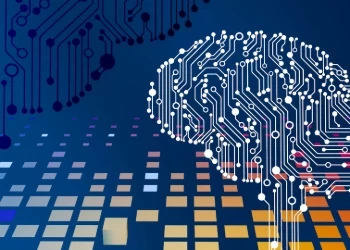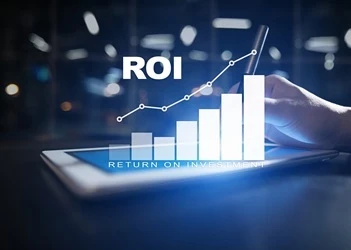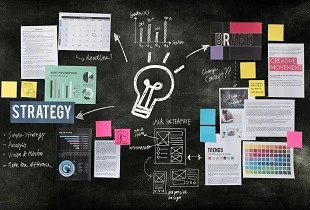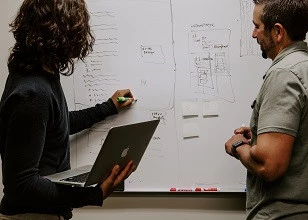Why process mining is just the beginning
Discover the numerous extensions of process mining that form the new ‘enterprise mining’ approach
Add bookmark
Process mining technologies have been used in many companies in recent years to bring transparency into business operations. In part one, I discussed the success factors helping this technology to achieve its 'must have' tipping point. In this follow up, I would like to highlight 'enterprise mining', an important further development, which allows completely new insights into all dynamic structures of a company.
Try ARIS Process Mining for FREE
The great success of process mining stems from the fact that the analysis of process execution leads directly to the identification of weaknesses and the optimization of a company's operational activities. Processes are a key focal point of analysis as they significantly determine both the strategic positioning and the efficiency of a company.
Extension to enterprise mining
Currently, the mining approach is being extended to other aspects of the enterprise. Several perspectives, partly comprising a digital twin of an organization, can be collated under the comprehensive term ‘enterprise mining’, offering new insights into dynamic structures and their optimization possibilities. Based on the analysis of process, the following additional aspects are of interest for enterprise mining:
Business ecosystem
Meaningful process analyses do not stop at the company boundary but are extended to the entire value chain. To optimize key performance indicators relevant to the customer, such as on-time delivery performance or service quality, it is necessary to track the entire business ecosystem that covers the entire production and distribution chains, including the activities of suppliers and partners.
Task mining
The activities measured in the context of process mining, for example, creating an offer or checking an invoice, usually consist of individual steps that can be analyzed in more detail. The term ‘task mining’ has become established for the analysis of interrelated work steps that take place at a desktop, the origin of which lies in the context of robotic process automation (RPA).
The results of task mining detail the steps that process mining explores. Currently, process mining and task mining are being integrated with the goal of analyzing every activity that becomes visible in process mining analyses in detail, regardless of whether a human or software robot executes it.
Organizational mining
There is potential for optimization not only in structured processes, but also in how employees, teams, departments or entire organizations work together in unstructured scenarios. Fragmented customer inquiry processing between different contacts is a classic example of non-transparent collaboration and inefficient communication structures causing long lead times.
The connection to process mining here is clear, since often individual process steps, such as creating a quote or defining a campaign, require complex interactions between employees and organizational units. These, however, do not follow a clear structure, but rather occur as individual ad hoc collaborations. Similar to task mining, the results of organizational mining can refine any process step.
Customer journeys
The methodology of customer journeys has been established for the analysis and optimization of interactions with customers. The objective is to document the chronological sequence of touchpoints and to analyze customer satisfaction along this journey. Touchpoints can be, for example, logging into an online store or completing a shopping cart.
Customer journeys can be seen as an external counterpart to business processes. Analogous to the process mining approach, customer journeys can also be automatically discovered, visualized and analyzed if the corresponding transaction data, such as log files for logging in or search queries, are available. Typical analyses concern response times or the emotional customer experience at individual touchpoints along a purchase or service process, known as ‘moments of truth’.
Material and goods flows
Many optimizations in industrial companies not only concern controlling the flow of processes, but also the flow of goods and materials. This requires combining the data from both operational technology (OT) systems and information technology (IT) systems.
Even though there is still a significant gap between the two worlds in many companies today, this integration provides immense insight for operational excellence as technological progress makes it possible to equip objects with sensors and processors so that all relevant information, such as position, temperature or pressure, can be transmitted in a cost-effective way.
Industrial Internet of Things (IIoT) applications generate a huge amount of raw data from the sensors and end devices. To deliver on the promise of Industry 4.0, it is necessary to filter out the data from the OT devices that is relevant for optimizing production or distribution processes and combine it with the corresponding IT data.
Data and information flow
The analysis of data and information flows has long been associated with the analysis of business processes. In growing IT architectures, understanding the interfaces between applications is of enormous importance.
The visualization of information flows is executed with data flow diagrams describing the input and output data of process activities. The analysis of these relationships can also be used for data protection issues in the context of compliance for regulations such as GDPR.
Overall concept of ‘enterprise mining’
The integrated view of ‘enterprise mining’ brings all the above aspects together in an overall concept.
 The holistic enterprise mining approach – (Source: Software AG)
The holistic enterprise mining approach – (Source: Software AG)
The previously mentioned perspectives that extend process mining enable a new view on the dynamic aspects and success factors of an organization. In the next few years, the degree of automation will also increase significantly in administrative areas so that data will be available even more easily to enable these analyses.





























































